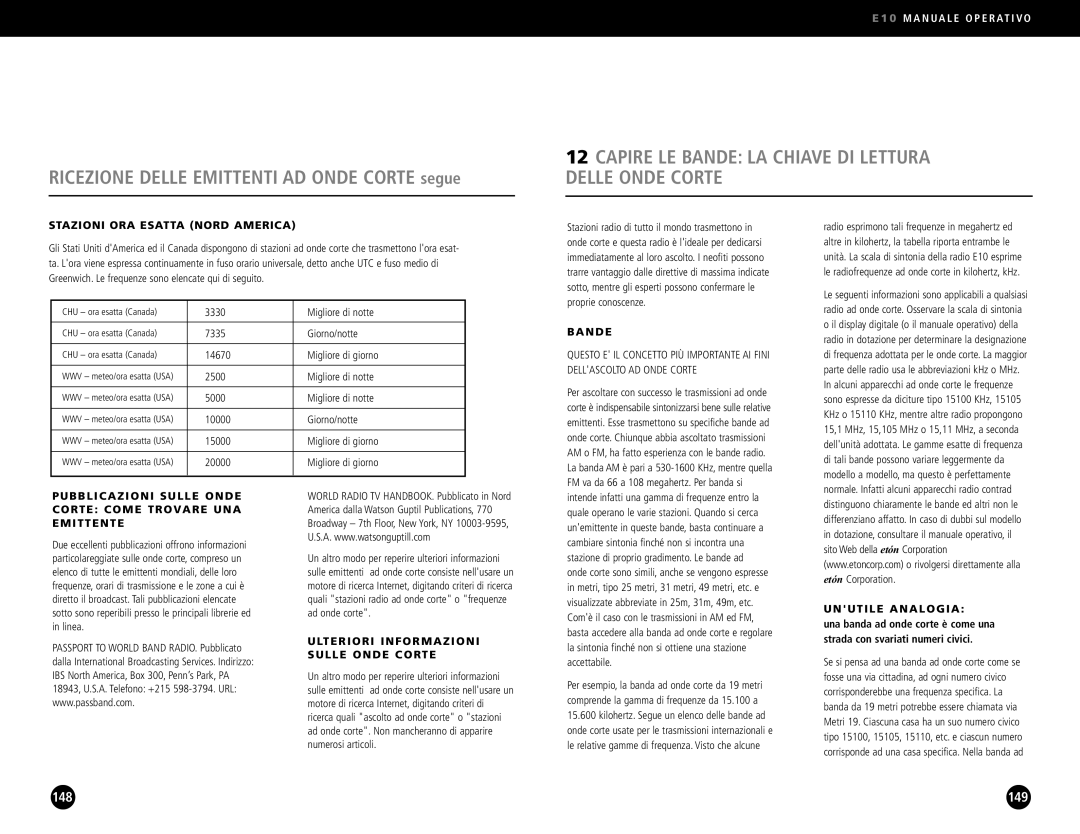E10 specifications
The Eton E10 is a versatile and feature-rich portable radio known for its impressive performance and comprehensive functionality. As part of Eton's commitment to quality and innovation, the E10 combines cutting-edge technology with user-friendly features, making it an excellent choice for outdoor enthusiasts, travelers, and anyone who enjoys listening to music or news on the go.One of the standout characteristics of the Eton E10 is its ability to receive a wide range of broadcasting signals. It covers AM, FM, and shortwave frequencies, ensuring that users can access a diverse array of programming. This wide frequency range is particularly beneficial for travelers who may find themselves in areas with limited access to local stations.
Another notable feature of the E10 is its impressive digital tuner, which provides precise signal locking and minimizes static interference. This technology enables users to enjoy clear, high-quality sound, enhancing the overall listening experience. The digital display is easy to read and provides essential information such as signal strength, battery life, and the current frequency being tuned, ensuring users remain informed.
The Eton E10 is designed with portability in mind. Its compact size and lightweight construction make it easy to carry while hiking, camping, or traveling. Additionally, the built-in rechargeable battery offers extended listening time, and the included AC and USB charging options provide flexibility for recharging the radio.
For further convenience, the E10 includes a headphone jack for private listening, as well as a built-in speaker that delivers robust sound quality. This feature allows users to share their favorite broadcasts with friends or enjoy a solitary listening experience while immersing themselves in podcasts, music, or news.
Durability is another hallmark of the Eton E10. Designed to withstand the rigors of outdoor use, the radio features a rugged casing that protects it from the elements while ensuring it remains functional in various conditions.
In summary, the Eton E10 is a reliable and multifaceted portable radio that excels in performance and adaptability. With its wide range of broadcasting capabilities, digital tuning technology, portable design, and robust sound quality, it caters to a diverse audience looking for a dependable and enjoyable listening experience. Whether you're on an adventure or relaxing at home, the Eton E10 is equipped to deliver entertainment and information wherever you are.

